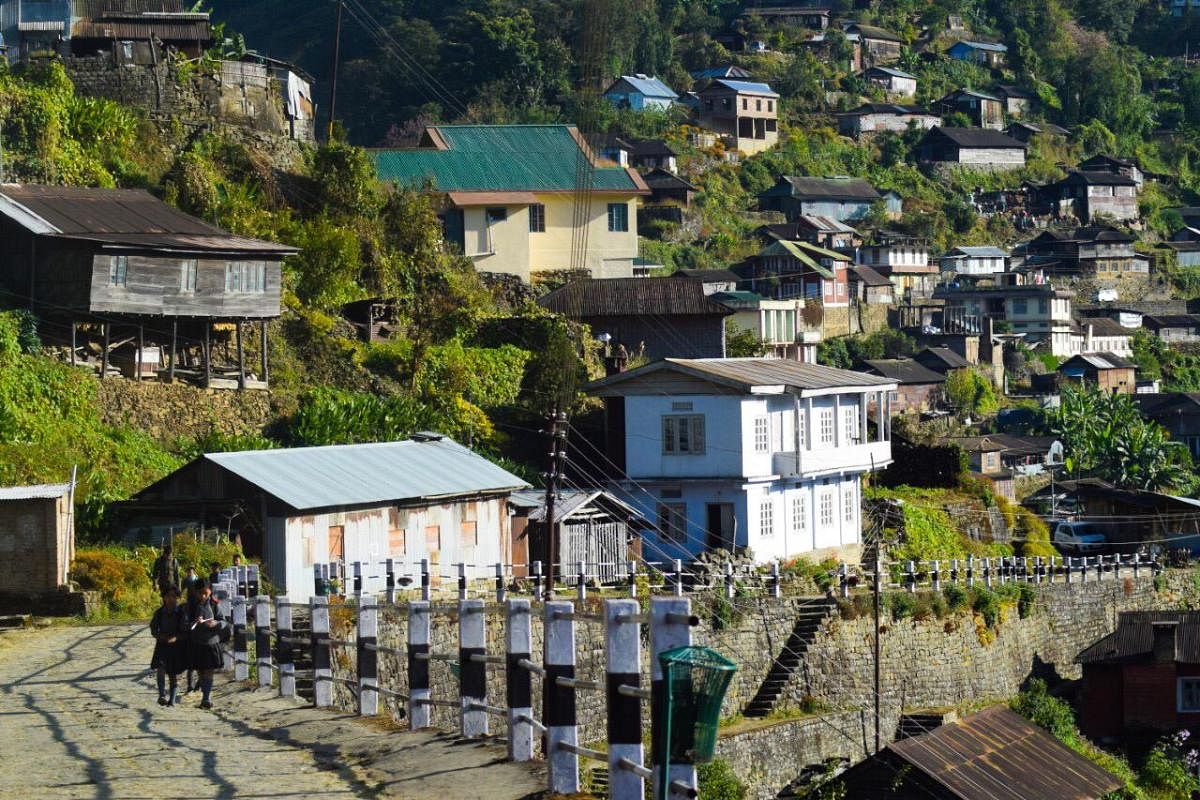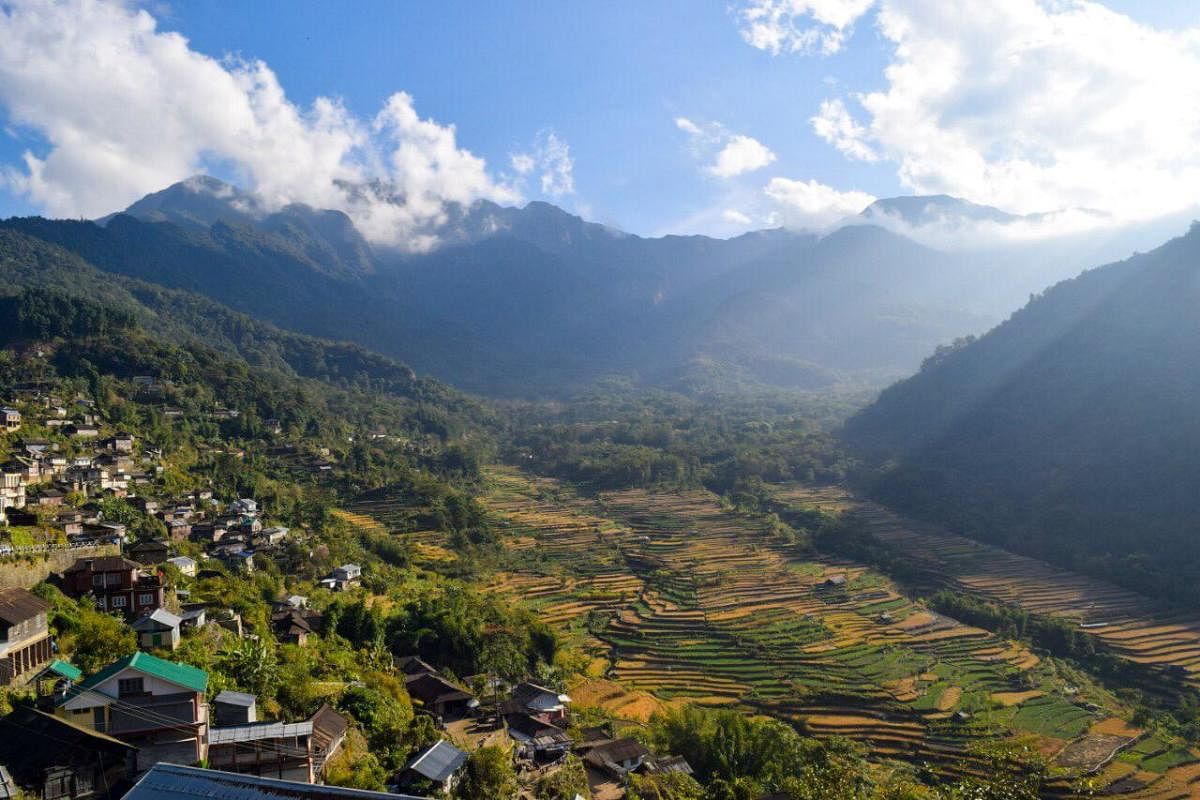
The sun’s rays filter through the canopy of green as we drive down from Kohima, the hilly capital city of India’s north-eastern state of Nagaland. The car snakes through the hills with its umpteen twists and turns and after an hour’s drive, we are greeted with a signboard that reads ‘Welcome to Khonoma’.
The picturesque hamlet, located on a cliff and set amidst sylvan surroundings, is one of the biggest and oldest Angami villages. Our guide Jievisekho Seyie tells us that this is an eco-tourism village and the first green village in Asia. The village, referred to as Khwunoria (named after an Angami term for a local plant, Glouthera fragrantisima), is believed to be around 700 -years-old and is spread over an area of 123 square kilometres. The inhabitants of the village number roughly around 5,000. The village is famous for its forests and a unique form of agriculture, including some of the oldest terraced cultivation in the region.
The state bird, Blyth’s Tragopan, an endangered pheasant, and other exotic ‘winged wonders’ like Wren-Babbler, partridge, jungle fowl, common pheasant, spot-breasted parrotbills, black storks, white-breasted kingfisher, chestnut-vented nuthatch, flycatchers, brown hornbill, white-winged duck, black-headed bulbul and the laughing thrush - to name only a few - are reportedly found here. Our guide tells us that over 350 bird species thrive in these parts.
Warriors
The Angami men of Khonoma, famed for their heroism, valour and strategic skills, engaged the British in fierce battles between 1830 and 1880. They carried out raids and disrupted the forced recruitment of the Nagas as bonded labourers. The Khonoma warriors’ battles with the British forces inspired other Naga villages to join them as well. After the death of British officer, G H Damant, M.A.C.S, on October 4, 1879, whose memorial stone lies here, the British laid siege to the tiny village. After holding out for four long months, a peace treaty was eventually signed with the British on March 27, 1880, and further bloodshed was avoided.
A stone inscription chronicling the events can be found at the Semomo Fort of Khonoma where the last battle was fought between the British and the locals. Christianity was introduced in the village in 1890 and today most of the villagers profess this faith. Nagamese is the mother tongue and the medium of instruction is English. Agriculture is the primary occupation of the Angami tribe.Their dinner plate also includes spiders, ants, worms and amphibians. In short, they eat anything that moves.
Eco-friendly tribe
The Angami tribals have taken a giant step to conserve biodiversity and wildlife. Hunting and fishing are banned and there is evidence of this in the signboards that dot the village. A fine of Rs 5,000 is levied on anyone who dares to flout these rules. The villagers are also prohibited from keeping pet dogs for fear of contracting rabies.
An interesting feature of the Angami tribe is that the dead share space with the living. The deceased are usually buried in a ceremony arranged by male relatives along a village path or in front of the dead person’s house. The body of a man is interred with a live chicken, a fire stick and one or two spears in a coffin covered with white cloth. A woman is buried with beads, a reaping hook and a young chicken in a coffin with flat stones.
The homes of the villagers flaunt colourful orchids and flowers and are neatly laid out along the slopes.
The view from the top of the village is breathtaking and gives us a 360-degree view of the surrounding hills and the step gardens below.
The Khonoma Fort, built of broken rocks, and which has seen numerous demolitions and reconstructions is the pride of the Angamis. Just beside the fort, one can see the battle-shield made of elephant hide, the village gong and an array of large bamboo baskets.
We also get to taste the apong (rice beer) offered by a generous resident and that certainly lifted our spirits (quite literally).
We sign off our trip with pork noodles and chicken fried rice at Dovipie Inn, the only restaurant in the village, and reluctantly bid goodbye to our guide with a promise that we would be back again next year for the Hornbill Festival.
